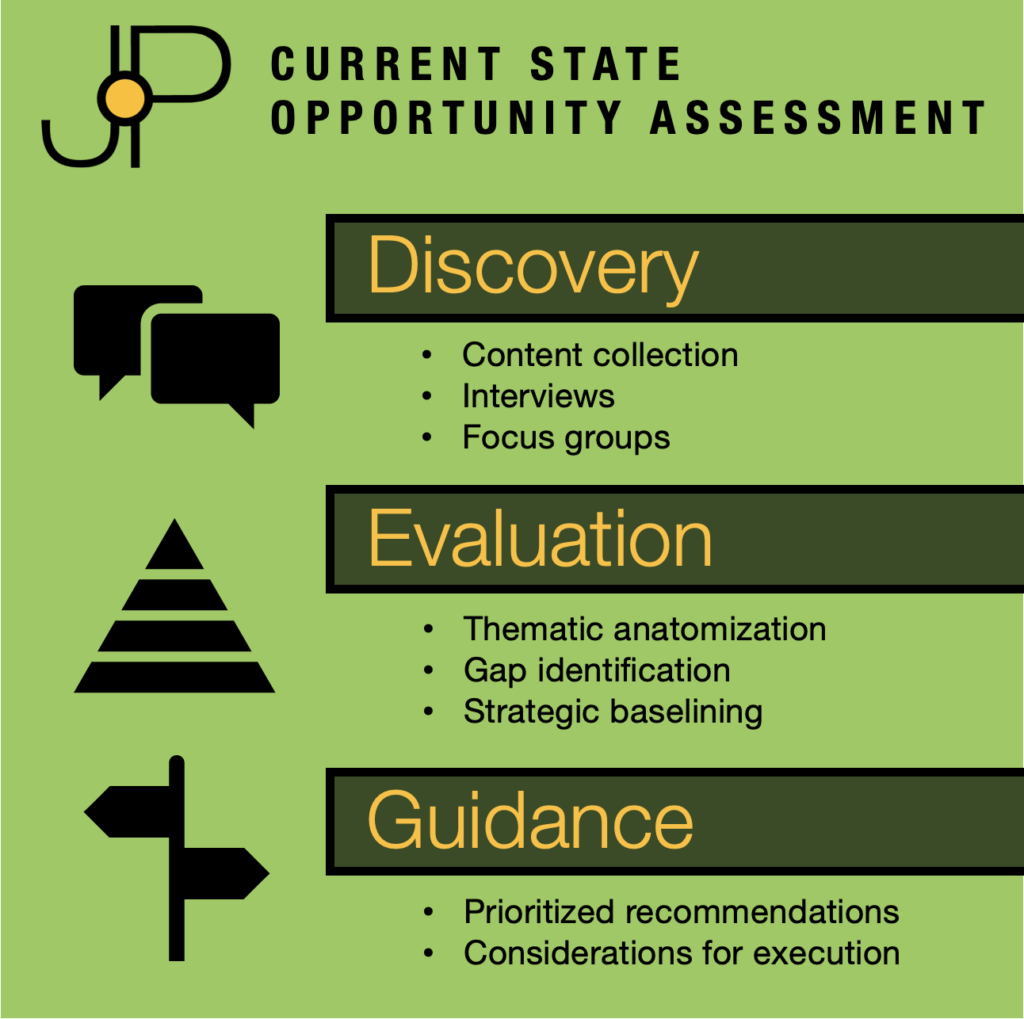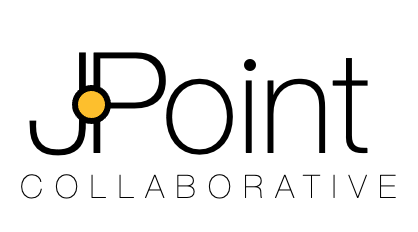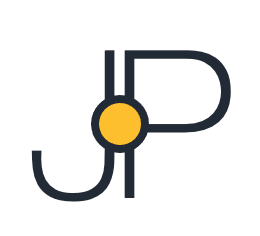Defining Baselines and Opportunities


The JPoint Collaborative team has recently begun working with a program of the Texas A&M University Agrilife Extension and we could not be more jazzed to be assisting them with their supremely cool work bringing data tools to decisionmakers at the local level. Their work, which is the case for a lot of our clients, is about meshing the technical and empathetic, the objective and persuasive, in order to inspire action on the ground.
It’s fitting, then, that one of the very first activities that we typically recommend for our clients is a Current State / Opportunity Assessment–an activity that also blends all of these elements and goals.
While a Current State / Opportunity Assessment can seem like an arduous process, it can save a ton of time in the long run. At JPoint, we take an approach inspired by the methods used in user-centered qualitative research (a research method that uses non-numerical, descriptive data –often from interviews or small group sessions–to understand subjects’ realities).
Synthesized takeaways from these structured conversations can then go into developing:
- A baseline, pre-solution snapshot of opportunities (gaps, adjustments, pain points, etc.)
- Stakeholder ecosystem maps (audiences, goals, actions)
- Onboarding or orientation products
- Public-facing communication products
We use a thorough interview process, which, in addition to providing us information and context, also gives team members a chance to feel heard and like leadership cares about them and their concerns. Sometimes leadership doesn’t have quite as thorough an understanding of team members’ concerns as they think they do! While we’re not able to achieve the richness achievable in a longer academic study, this rigorous approach to a current state / opportunity assessment allows us to be more efficient when we actually start make recommendations to your organization.
To be done well, Human-Centered Design requires a rich understanding of the stakeholders and audiences who use the products. By starting with a Current State / Opportunity Assessment, we can quickly build a collaborative understanding of what the team is up against, and help them work around their obstacles to execute successfully.

